My friend Derek
inspired me to try hand pollinating some of my orchids. Derek hand pollinated his Phalaenopsis with itself. I was lucky enough to have two
Dendrobium species (not hybrids) in bloom at the same time, so I set out to cross this unusual and very different species. The anatomy of orchids is very similar, regardless of the genus, which is what makes them orchids. I watched a
video on youtube before trying this. It is a very simple process, but that didn’t prevent me from making a mistake!
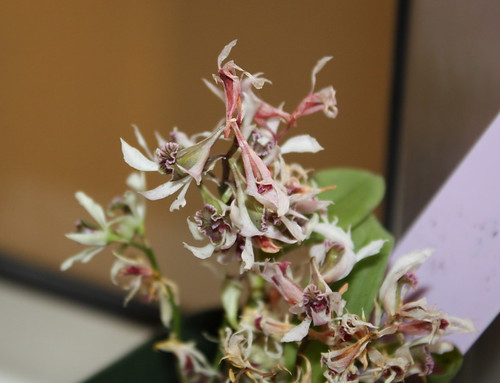 |
| Dendrobium peguanum blooms |
One of my plants is
Dendrobium anceps, which I posted
photos of recently. The other is
Dendrobium peguanum, a little miniature that I purchased recently in full bloom. This little guy is only about 2 inches tall (maybe less) and held about 25 blooms above his little pseudobulbs.
The process of hand pollination requires 2 easy steps:
1. Choose one healthy bloom. Using a toothpick, remove the pollinia from this bloom.
 |
| Dendrobium anceps pollinia being removed |
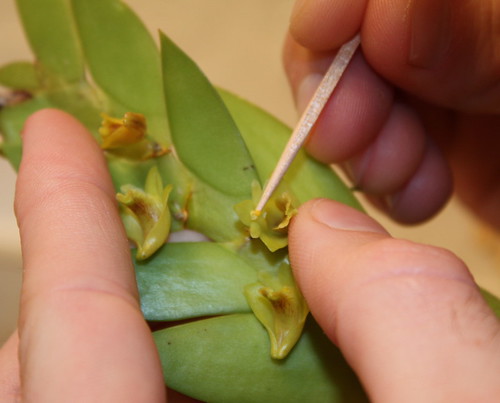 |
| Dendrobium anceps pollinia being removed |
The pollinia are two tiny orange dots that are hidden behind the anther cap on the column. And for these little
Dendrobium I was working with, when I say little, I mean tiny. In my case, I separated the anther cap from the pollinia so I could concentrate on keeping track of the pollinia, which is the only part that matters here.
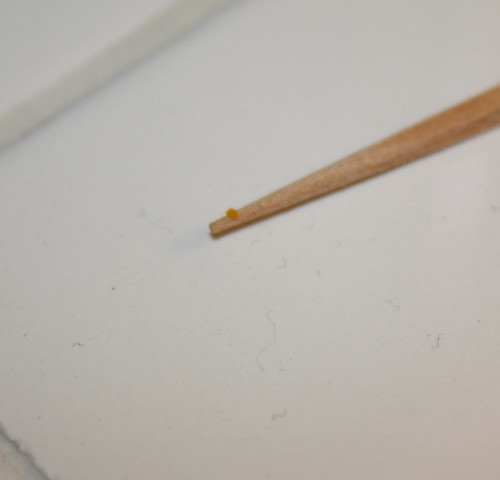 |
| Dendrobium anceps pollinia on toothpick |
The column is the part that sticks out from the plane of the flower and is opposite the lip. The lip is usually pretty obvious, sometimes being frilly on the edges. Usually, the column is positioned above the lip, which is called resupinate and means “upside down.” So the “norm” for orchids is upside down. When the column and lip are arranged the opposite way it is considered non-resupinate. These
Dendrobium have a mixture of arrangements on them, as you can see in the pictures below. Same bloom, just “upside down” in one and “right side up” in the other.
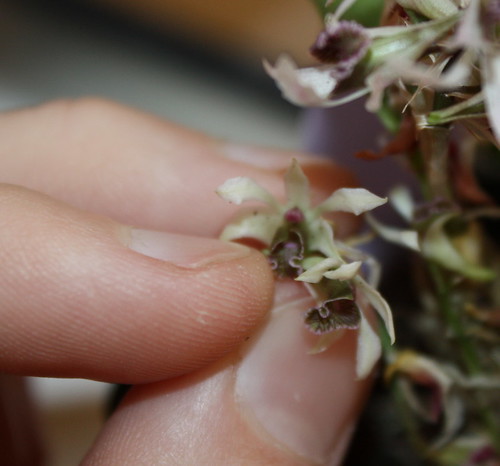 |
| Dendrobium peguanum resupinate bloom |
 |
| Dendrobium peguanum non-resupinate bloom |
2. Place the pollinia inside the receptor on the column. This is where I screwed up. Once the anther cap and pollinia are removed from the column, there is a little bit of a hole exposed on the tip of the column. I tried to place the pollinia back in that hole. After I did so, I was laying in bed thinking something didn’t seem right about that. I got out of bed, watched another youtube video and realized my mistake. Thankfully, the pollinia were relatively simple to remove and I was able to put them in the proper location. The proper location is the little green void that you can see just below the tip of my toothpick in the picture below.
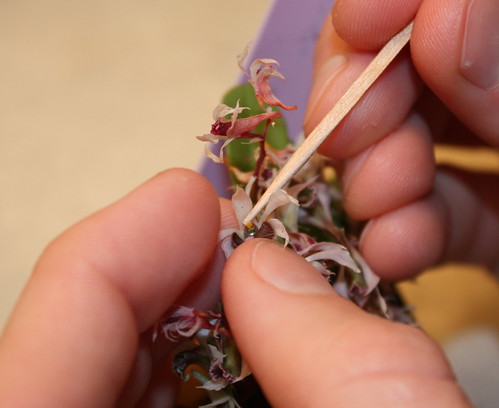 |
| Dendrobium pegaunum being pollinated with pollinia from Dendrobium anceps |
Since both plants had many flowers in good health, I pollinated several on each plant independently, and then I crossed one flower on each plant. After doing so, I put a little sticky note flag next to each of the blooms that was a crossed pollination, so I will know that those are special, if a seed pod forms.
Orchids are not easy to grow from seed. Although it happens in the wild in a haphazard manner, to grow an orchid from seed outside of nature, it must be done in a sterile lab environment. And it costs money. If I get pods to form on my orchids I will probably count it a success but not do anything with them. UNLESS I get pods to form on those two flagged blooms. Those would be special, because I would have created my own hybrid,
Dendrobium anceps x
Dendrobium peguanum and
Dendrobium peguanum x
Dendrobium anceps, depending on which plant was the pollinator or the pollinatee. If I get this lucky, I will probably send my pods off to be flasked, in which case I could wait 6 months to a year before getting some little plants back. I don’t know if these have been crossed before or not. Maybe something interesting will result.







No comments:
Post a Comment